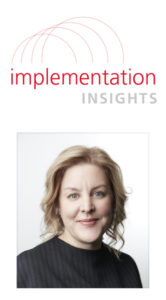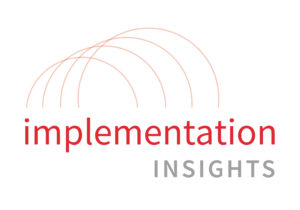
Beth Sasfai, Senior Vice President, Corporate Governance & Chief ESG Officer at Verizon
We recently caught up with Beth Sasfai, Senior Vice President, Corporate Governance & Chief ESG Officer at Verizon, one of the world’s largest communications technology companies. Verizon began using SASB Standards in its 2019 ESG Report and Sasfai shares key takeaways from the implementation experience.
Tell us about Verizon’s sustainability reporting efforts and where they stand today.
Earlier this year, to better inform our investors, our Environmental Social & Governance (ESG) team transitioned Verizon’s historical corporate responsibility reporting to investor-focused ESG reporting. The 2019-2020 reporting year reflects the most significant and transparent non-financial reporting Verizon has published to date. We released numerous reports and updates for our investor audience and other stakeholders throughout the year, including an annual ESG Report, previously called our Corporate Responsibility Report, which included an inaugural SASB index outlining how our existing disclosures align with the Sustainability Accounting Standards Board’s Telecommunications Services standard.
Why did Verizon choose to use SASB Standards to guide its ESG disclosure?
Investor feedback played an important role in our decision to publish Verizon’s first SASB index. We spent time engaging with our institutional investors asking basic questions like: What reporting frameworks are most useful to you for investment decision-making purposes? What do you think are Verizon’s most “material” ESG issues? Where do you prefer we report our ESG-related information? Would you rather we focus our resources on providing a laundry-list of data points or on prioritising our reporting to address our most significant ESG issues in a deeper way? The feedback we gained through investor engagement helped us determine that focusing on the SASB framework made sense for Verizon.
Our institutional investors were practically unanimous in their belief that ESG needs to be integrated into investment decisions and that this requires more transparent, standardised reporting that prioritises those ESG issues that are most important for our industry and that align with our core business strategy. While the feedback acknowledged that no framework is perfect, many of our largest investors strongly encouraged us to use the SASB framework as the preferred way to provide them with the most decision-useful Verizon ESG information.
We decided to go about creating a SASB index to accompany our 2019 ESG Report. The SASB index outlines how our ESG disclosures align with the recommended quantitative metrics and qualitative disclosures called for by the SASB Telecommunications Services standard. Topics covered include our environmental footprint, data privacy and security, the amount of e-waste recovered and recycled, how we manage business continuity risk, and competitive behaviour and the open internet.
How did you get the implementation process started?
As a first-time SASB reporter, we needed to fully understand the breadth and depth of the framework. We were easily able to identify the standard that best applied to our business and we then evaluated our existing reporting against the recommended disclosure topics and metrics from SASB. We discovered that certain of our existing disclosures already aligned with the SASB Telecommunications Services standard and we decided that was a good starting place to bring our first SASB index to life.
What’s next for Verizon in terms of ESG disclosure?
This year’s SASB index and reporting is just the start. We are constantly evaluating additional metrics for purposes of future reporting and are committed to continuous improvement in our ESG disclosure process. We appreciate that both SASB and our investors recognise that ESG reporting is a journey. As Janine Guillot, CEO of the SASB Foundation shared, “SASB applauds companies such as Verizon for acknowledging the disclosure of ESG risks and opportunities are of paramount importance for business leaders and investors. Verizon is taking a critical first step to drive transparency around how the company is creating long-term value through ESG.”
What advice would you give to other companies looking to use SASB Standards for the first time?
In reflecting on our journey as a first-time SASB reporter, there are a few key takeaways I’d like to share:
- While we are still in the beginning stages of aligning to SASB, taking the plunge was worthwhile for our company. The SASB indicators are unveiling areas where we can further strengthen and improve our ESG reporting.
- For any company considering aligning to frameworks like SASB, I recommend proactive engagement with investors. We found our engagement to be collaborative and encouraging.
- I cannot stress enough how important it is to take the time to educate senior leadership and colleagues on the importance of aligning to key reporting frameworks. For us, this allowed our team to gain support for the appropriate resources, including our colleagues’ time and expertise.
- Don’t let perfection stand in the way of progress. We found that a number of the SASB metrics simply do not align with the measurement systems that we have in place for our operational data, making it cumbersome – and in some cases, impossible – to report the requested metric. In these instances, we have been as transparent as possible, noting how the metric we do report differs from the SASB metric or explaining why we can’t provide the data point in the requested format and linking to other relevant content in our ESG report.
Previous SASB Implementation Insights:

